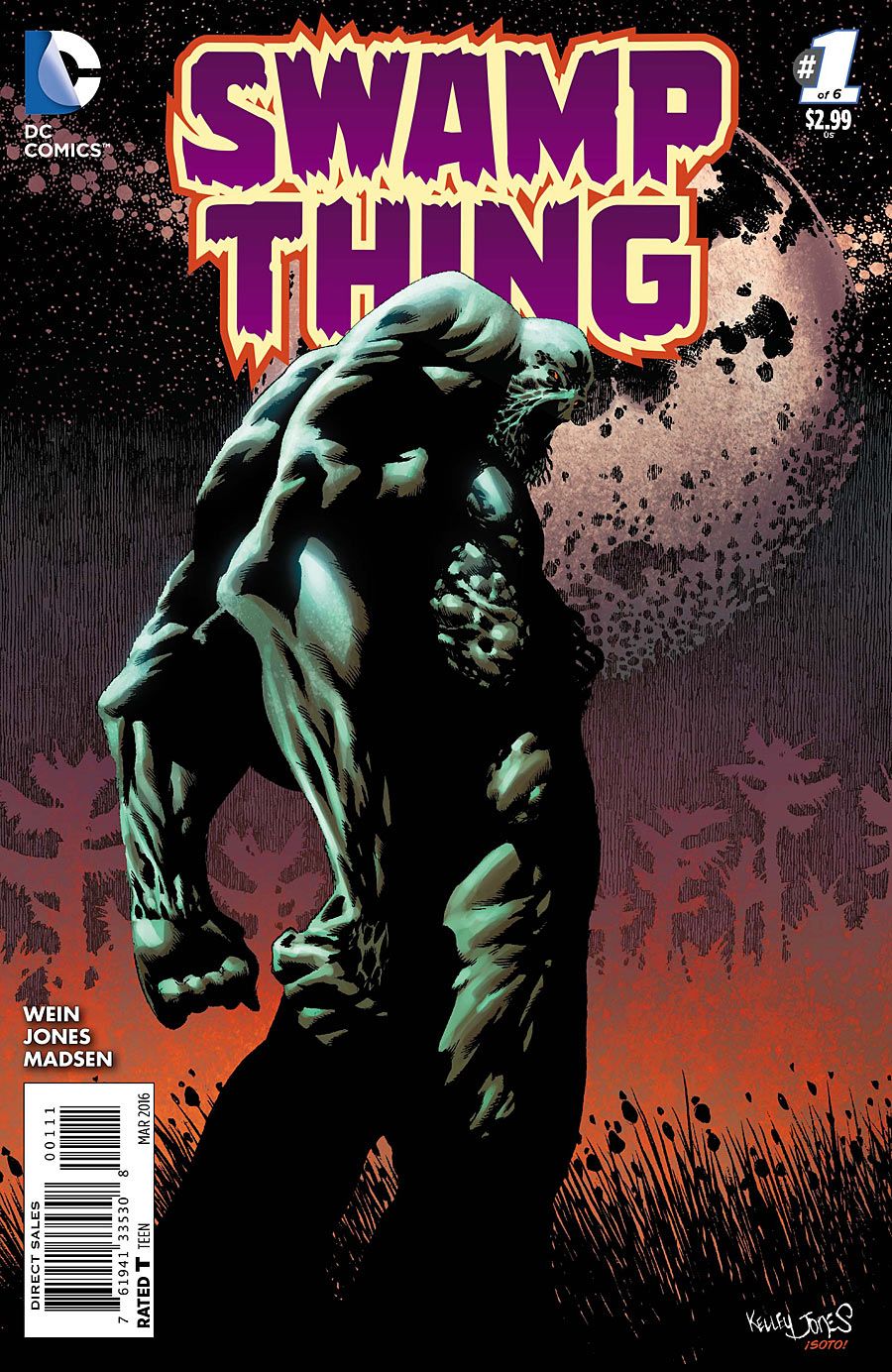Forty-five years after co-creating his famous DC Comics character, writer Len Wein returns home to the marshy wetlands in "Swamp Thing" #1, the first installment of a six-issue miniseries lavishly and eerily illustrated by Kelley Jones. With an awareness of his character's own lavish history, Wein throttles back on the complexity, acknowledging past continuity but not participating in it. He avoids slogging through a potential quagmire of history in the same way his character slogs through the swamps, and -- in doing so -- delivers a comic that's welcoming in its refreshing simplicity.
The third person narration and the main character's penchant for talking to himself gives the story an old-school vibe, but Wein's scholarly and almost poetic verbiage keeps the script from sounding dated; in fact, Wein's simple but solid scripting will remind readers why he's an industry veteran. Storytelling basics -- like working the character's origin into the early part of the story -- clues new readers in to the Swamp Thing's character, while reminding older ones who might have forgotten his beginnings; forty five years is a long time ago, after all. Having set up the character and the environment, Wein goes on to work in a surprising guest appearance, as well as note that the character's longstanding continuity isn't being jettisoned.
Jones is the ideal artist to render Wein's story, with his ghastly imagery capturing the pseudo-undead nature of the Swamp Thing, while simultaneously evoking the dark and foreboding beauty of the surrounding swamplands. His cover for the standard edition of the comic is ironically the weakest image of the book, showing on oddly proportioned Swamp Thing who appears partially disemboweled, but the character still manages to look striking against a night sky and impossibly large moon, which is nicely contrasted by Chris Sotomayor. Inside, Jones and interior colorist Michelle Madsen lead off with a downright beautiful set of pages that gives the swamps of the Louisiana Bayou both gorgeous and frightening detail.
Wein's story has that creepy, undead atmosphere perfect for Jones' trademark creepy, undead style. The sunken eyes, bulging veins and Swamp Thing's innards are all constructed with exquisite detail that brings a kind of perverse beauty to something intended to be horrific. The villain of the story -- who Wein sympathetically portrays as a victim as well as a bad guy -- is labeled a zombie, but Wein doesn't feel compelled to use the standard and prevalent George Romero template of the undead; instead, he harkens back more to the classic Marvel mags of the 1970s, another refreshing touch that reminds readers zombies don't have to all be mindless flesh-eaters. Likewise, Jones knows how to construct a classic zombie without having to resort to dangling eyeballs and rotting, half-attached limbs.
"Swamp Thing" #1 isn't a soul-searching, character-driven story, nor does Wein try to make it one. Instead, he goes for straightforward suspense and horror, with a simple approach that introduces a conflict which fits right in with the character's classic vibe. Jones brings Wein's story to life, making the comic a solid example of basic storytelling that relies on nothing besides its premise to make it worthwhile.

